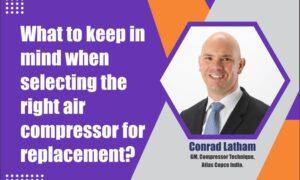It is beyond discussion that the global climate emergency calls for solutions that reduce greenhouse gas emissions and supports de-carbonisation. Often, the spotlight is aimed at renewable energy as the solution, but in fact, we can achieve 44 percent of the required global reductions by capturing the potential of energy efficiency according to World Economic Forum.
Investing in existing technologies enables us to become carbon-neutral significantly more cost-effective and at a higher pace than if we solely focus on expanding renewable energy. Imagine if we could achieve the majority of the carbon-emission reduction targets with solutions already at hand. The socio-economic savings by investing in energy efficiency is a route that deserves more attention. If we invest in already known technologies, we can introduce renewable at a higher pace and in a more cost-efficient way in our endeavours for carbon neutrality because when the use of renewable increases, it reduces the pressure on the growth of clean energy. All fingers point at scaling up sustainability and developing green cities, sustainable products and product life cycle assessments and both renewable and improved energy-efficiency is a prerequisite for this development.
Energy-guzzling old equipment
Urban areas account for two-thirds of global energy demand and 70 percent of carbon dioxide emissions . One of the obvious ways to bring down urban energy consumption levels is to invest in energy-efficient heating and cooling in buildings and to electrify transport. If all urban areas and cities in Europe, China and the US invested in energy-efficient buildings, they would contribute to the 1.5°C target of the Paris agreement with 20 percent, making a significant contribution to keeping global heating within the 1.5°C target.
Inefficient centrifugal and axial fans with non-optimised aerodynamic design are some of the worst energy-guzzlers. But new solutions are available. Some of the newest fans have efficiency levels as high as 92 percent, where older fans hit somewhere between 50 to 80 percent. Cities are in need of a vast number of fans to secure fresh and clean air in tunnels and parking basements, as fire prevention fans and for heating and cooling in buildings. If we replace these with new high-efficiency solutions, it is a quick and financially wise route to take a huge step in the green transition as the payback time for new fans are short which also reduces the need for investment in renewable afterwards.
The new fan solutions are designed and produced with recyclability in mind, and up to 98 percent can be recycled. They use high-tech frequency drives that can run a motor at variable speeds. This enables intelligent building ventilation where the ventilation system helps save energy and improves system efficiency. As they are technologies that have been continually developed and refined, they meet the highest emission and efficiency targets. Replacing old fans also adds to the reduction in heat generation as newer and more efficient fans generate less heat gain and have much lower sound levels.
Abundance of good-will but lack of action
To bring about this change, we have to embed the good intentions into the specific product specifications driven by ambitious EU legislation and by companies taking on the responsibility. This is the only way we can ensure that the goals for high energy efficiency levels are put into practice in the production and supply chain. If green legislation is not ambitious enough and is not embedded in the processes and procedures at a company, city or country level, we will not reach the global climate targets set out.
In conclusion, the potential of investing in energy-efficient and sustainable solutions is evident, but there is a need for legislation to overcome the barrier which the higher cost for raw and recycled materials poses. The legislation should support green initiatives and products, so the cost difference is only minimal because, in the end, the initial cost drives the decision to buy for the majority of owners and developers. There is no doubt that legislation can help us in the right direction.
Authored by
Lars Erik Knaack,
CEO,
NOVENCO Building & Industry
Cookie Consent
We use cookies to personalize your experience. By continuing to visit this website you agree to our Terms & Conditions, Privacy Policy and Cookie Policy.















